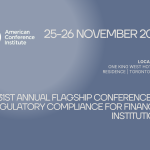Social-Washing
In recent years, diversity, equity and inclusion (DEI) have become prominent themes in corporate Environmental, Social, and Governance (ESG) reporting. However, while many companies showcase their commitment to these values, the tangible outcomes often tell a different story. For instance, a review of Fortune 500 companies revealed that, although 154 published diversity reports, only a fraction provided detailed insights into the actual impact of their DEI initiatives.
This discrepancy has given rise to the term “social-washing,” akin to greenwashing, where organisations project an image of social responsibility without substantive actions to back it up. While ESG frameworks have increased the visibility of DEI efforts, there’s a growing concern that these reports serve more as branding tools than catalysts for genuine change. This article takes a deeper look at the nuances of social-washing, examining how companies can transition from performative gestures to meaningful social impact, ensuring that their DEI commitments are both authentic and effective.
Real Metrics
In the realm of ESG reporting, social-washing has emerged as a pressing concern. As with greenwashing, but focusing on social issues, social-washing allows organisations to appear ethically conscious while their internal practices may tell a different story . A significant factor contributing to social-washing is the presence of vague metrics within ESG frameworks, such as the Global Reporting Initiative (GRI) and the Sustainability Accounting Standards Board (SASB). These ambiguities enable companies to highlight superficial achievements, like hosting diversity workshops, without addressing deeper systemic issues. This scenario presents the “compliance versus conviction” dilemma: are companies genuinely committed to DEI, or are they merely fulfilling perceived obligations?
A pertinent example is Target, which faced a lawsuit from the State of Florida alleging that the company misled shareholders about the risks associated with its DEI initiatives. The controversy intensified following a problematic Pride Month campaign in May 2023, leading to the discontinuation of certain DEI programmes in 2025 . As stakeholders become more discerning, it’s imperative for companies to move beyond performative gestures and ensure their social responsibility claims are backed by genuine, impactful actions.
Performative vs Transformative
Within ESG reporting, distinguishing between performative and transformative DEI initiatives is crucial. Performative DEI often manifests as superficial gestures—such as hosting special promotion days without implementing year-round strategies, making public commitments without tangible follow-up, or relying solely on Human Resources departments without executive-level engagement. These actions may create an illusion of progress but lack substantive impact.
Conversely, transformative DEI is characterised by deep-rooted, systemic change. This includes holding leadership accountable for DEI outcomes, integrating DEI objectives into core business strategies, such as innovation and customer engagement, and maintaining transparent internal reporting mechanisms. As an example of this, Salesforce has implemented DEI initiatives inspired by employee feedback, aiming to increase a sense of belonging among underrepresented groups through confidential one-on-one coaching sessions.
Emerging practices further exemplify transformative DEI. “Reverse mentoring,” where senior executives are mentored by junior, diverse staff members, fosters mutual understanding and breaks down hierarchical barriers. Additionally, “inclusion nudges”, behavioural design interventions, are employed to mitigate unconscious biases in daily operations, such as recruitment and promotion processes.
As DEI thought leader Melonie Parker, Chief Diversity Officer at Google, asserts, “Real change requires moving beyond symbolic gestures to embedding inclusion into the fabric of organisational culture.” In essence, while performative DEI may offer short-term reputational benefits, transformative DEI drives sustainable organisational growth and fosters genuine inclusivity.
Making the ‘Social’ in ESG Real
To transform the ‘Social’ component of ESG from a branding exercise into a catalyst for genuine change, companies must embed DEI into their core operations. This involves implementing practical, measurable strategies that go beyond superficial commitments.:
1. Tie DEI Goals to Executive Compensation
Linking executive pay to DEI outcomes ensures accountability at the highest levels. For instance, Tapestry, the parent company of Coach and Kate Spade, has integrated DEI metrics into executive compensation, aligning leadership incentives with diversity objectives. At this point it should be said, however, some companies are re-evaluating this approach due to legal and political pressures, highlighting the need for carefully designed, legally sound DEI-linked compensation plans.
2. Employ Third-Party Verification Tools
Utilising platforms like Diversio and Blendoor allows organisations to assess and improve their DEI efforts objectively. Diversio, for example, offers analytics and workforce compliance tools that help companies identify inclusion gaps and benchmark against industry standards.
Diversio
3. Shift Focus from Representation to Influence
It’s crucial to evaluate not just who is present in the organisation but who holds decision-making power. Tracking metrics related to leadership diversity and promotion equity can provide insights into the true inclusivity of a company’s culture.
4. Establish Safe Channels for Employee Feedback
Creating confidential avenues for employees to share their experiences can uncover systemic issues and inform targeted interventions. Regular inclusion audits and employee sentiment surveys are tools that can facilitate this process.
5. Highlight Innovative Practices
Fintech companies like Monzo have pioneered inclusive practices by implementing transparent salary bands and anonymised hiring processes, setting industry benchmarks for equitable employment practices.
Investors are increasingly scrutinising companies’ social impact, demanding transparency and tangible results over polished reports. By adopting these strategies, organisations can move beyond performative gestures, embedding DEI into the fabric of their operations and building trust with stakeholders
The Future of Social-Washing
As Generation Z continues to enter the workforce and consumer market, their expectations for corporate authenticity in social responsibility are reshaping business practices. This demographic values genuine commitment to ethical, social, environmental and labour aspects of corporate social responsibility, distinguishing themselves from previous generations . Companies that fail to align their actions with these values risk losing credibility and market share.
The concept of a “Social License to Operate” (SLO) has become increasingly pertinent. An SLO refers to the ongoing acceptance of a company’s standard business practices by its employees, stakeholders and the general public. Maintaining this license requires consistent, transparent and responsible operations that meet societal expectations .
It is worth registering here that not everyone feels that this agenda is crucial to commercial and social progress. There is a growing critique regarding the allocation of resources towards the social element of ESG. Some argue that excessive focus on social initiatives, without measurable outcomes, may divert attention from core business objectives and lead to inefficient use of time and capital. This perspective suggests a need for balanced investment in social responsibility, ensuring that efforts are both impactful and aligned with business goals.
Looking ahead, is it possible so see social-washing practices as sustainable in the longer term? This seems unlikely. As stakeholders demand greater transparency and accountability, companies must evaluate whether their social initiatives are substantive or merely performative. The critical question remains: Will the leading companies of tomorrow be those that deliver on their social promises, or those that simply present a polished image today?
And what about you…?
- How do you differentiate between genuine efforts to promote diversity and inclusion in your organisation and initiatives that may be more about appearance than impact?
- What worries do you have about the potential consequences of ‘social-washing’—for your organisation, stakeholders or society at large?







